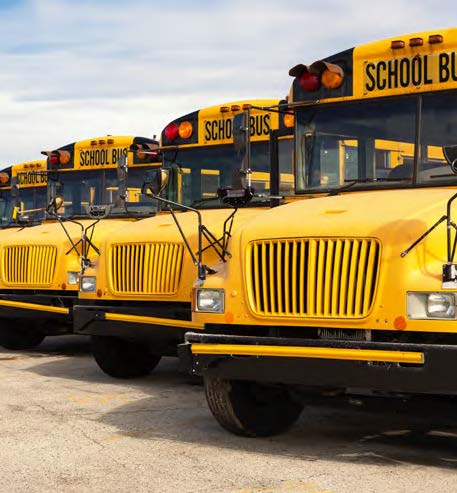
National Hurricane Preparedness Week: A Vital Alert for 2024
As National Hurricane Preparedness Week approaches, it’s crucial to address the heightened activity predicted for the 2024 hurricane season in the Atlantic, Eastern Pacific, and
When leaders in the Elkhorn Area School District (EASD) developed plans to reopen schools during the COVID-19 pandemic, they knew that contact tracing for exposure and transmission would be essential to provide a higher standard of care. From prior experience managing short-term emergencies, administrators across EASD knew that manual spreadsheets and people-intensive processes would slow the pace of detecting and responding to changing conditions.

The incident command team selected Juvare’s WebEOC as a comprehensive solution that could meet the immediate needs of incident management during the pandemic, while scaling and extending to other types of emergencies and incidents in the district’s future. As a cloud-based solution with permissions-based access control, WebEOC delivered critical flexibility so that district leaders could collaborate in real time, even while working from remote locations to maintain safe social distance.
As a major enterprise in Elkhorn, Wisconsin, the Elkhorn Area School District depends on 350 staff to educate and care for more than 3,400 students across seven schools. As neighbors to Milwaukee, with a local university campus and significant community mobility, Elkhorn families and staff interact with multiple communities and settings across the region. Protocols from the Centers for
Disease Control along with state and county health authorities created a challenging system of overlapping requirements and
protocols. That complex operational environment turned contact tracing and reporting into a detailed and complicated project with unpredictable data inputs from a variety of individuals and ad hoc systems.
As part of their commitment to a higher level of care, principals, teachers, and other staff members contact students and families to trace contacts, disclose possible exposure, and initiate mandated exclusions or precautionary quarantines. With even limited instances of exposure, the number of contacts grows so exponentially that the communication and documentation workloads threaten to overwhelm available personnel. Tasks like tracking new enrollment, verifying overlapping contacts, documenting testing status and monitoring days in quarantine create a complex web of responsibilities and data flows.
Citywide EMS dispatchers are responsible for prehospital to hospital communication anytime an MCI occurs. Before the process was streamlined, an MCI declaration triggered a manual process requiring a string of verbal communications between EMS dispatchers and personnel in the hospital emergency department (ED), and then additional internal communications between the ED and hospital stakeholders to prepare for the potential patient surge.

Operating with manual systems while depending on individuals with limited training left EASD vulnerable to a single system failure or individual error—potentially leading to uncontrolled
and dangerous transmission. Depending on educators and other school staff to understand and implement shifting requirements created significant distractions from the educational mission and increased the district’s risk for medical or legal missteps. Proprietary or shared spreadsheets are not designed for multiple users or data validation. Competing preferences and data entry styles created inconsistencies and undermined data integrity.
Along with the logistical challenges of tracing and reporting exposure, EASD was simultaneously faced with an enormous imperative to prioritize community relations. Community members expect district leaders to provide regular updates that are timely and accurate, in support of decisions to maintain in-person learning or convert to remote learning if needed. As COVID conditions and regulations sparked intense political debate, educators across EASD needed to deliver data-centered decisions based on transparent metrics and criteria.
Beginning in September, 2020, EASD went live with Juvare WebEOC Campus, creating a
Coronavirus Update Center with school-specific case data, healthcare resources, key contacts, and district protocols for families, students,
and staff. Developing consistent definitions and data-entry protocols reduced the potential for human variation and increased the accuracy
and credibility of district data and decisions. Using an accessible architecture with always on
functionality equipped multiple users to enter data from multiple sites, fostering loadsharing
across the workforce and decreasing critical dependencies on any single individual or
department.
Having web-based options along with a mobile app gave administrators and other professions immediate access to track individual cases, school communications logs and quarantine updates along with early detection of concerning patterns or trends. Available bidirectional
data collaboration improved leaders’ situational awareness and decreased the time needed to maintain up-to-date planning and rapid implementation.
As a school district, operating with constrained resources and legacy systems, it was critical
that any new system fit within the available budget, integrate with existing systems and
offer rapid deployment. Juvare’s solutions team met those critical needs through favorable
pricing to accelerate selection, deployment, and integration in less than three weeks before schools opened. As one key component, EASD required interoperability between the student
information system and the WebEOC platform. Juvare’s product delivered that functionality on
startup, with open APIs to support automated file uploads tracking new student enrollment and daily withdrawals.
The centerpiece of the update center is a COVID-19 dashboard, powered by Juvare’s WebEOC platform, that displays real-time data for confirmed cases as well as individuals quarantined after school or community exposure. Along with daily updates through the dashboard, the district administrator provided weekly updates and communicated key decisions, linked to published metrics and emerging community guidance. Providing transparent information well in advance of critical decisions increased community engagement and understanding.
In addition to the public-facing dashboard, WebEOC Campus delivers a suite of collaboration
tools like after-action reports, status boards, incident team management, and form-based
workflow processing through an intuitive, unified interface designed to improve clarity and streamline performance under the stresses of an urgent or ongoing crisis. For Elkhorn Area School District, WebEOC has made staff members more powerful advocates for safe and effective education.
To view results, download the full case study below.

As National Hurricane Preparedness Week approaches, it’s crucial to address the heightened activity predicted for the 2024 hurricane season in the Atlantic, Eastern Pacific, and

Introduction In the digital era, the stakes for cybersecurity have never been higher. As threats evolve and multiply, securing sensitive data becomes not just a

This blog post aims to highlight the critical need for advanced emergency management solutions, emphasizing the value of Juvare’s technology in enhancing organizational resilience. The